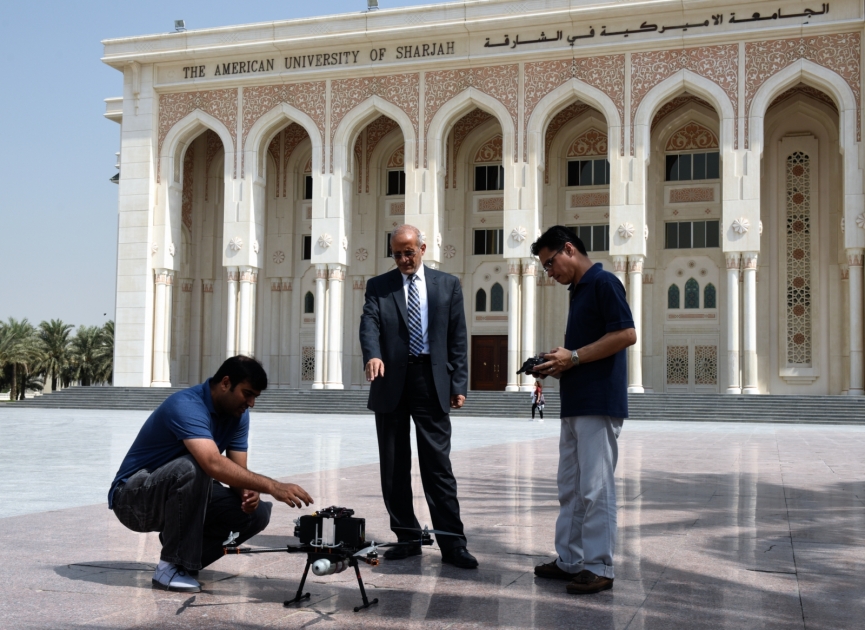
AUS conducts hydrogen fuel cell multi-rotor drone flight
A team of researchers at American University of Sharjah (AUS) successfully conducted a hydrogen fuel cell powered multi-rotor drone flight late last week, in front of the university Main Building. This is the first flight of its kind outside North America.
The team includes Dr. Mohamed Gadalla, Professor in Mechanical Engineering, as the research team leader; Dr. Sayem Zafar, a laboratory instructor in the Department of Mechanical Engineering; and John Mempin; a research technician and certified pilot.
The drone is powered by Proton Exchange Membrane hydrogen fuel cell (PEMFC) and is able to maintain steady hover and forward flight. The test flight was conducted to demonstrate the feasibility of using a hydrogen fuel cell in multi-rotor drones. Fuel cell powered multi-rotor drones are capable of flying for many hours as compared to the traditional battery powered drones with flight endurance of 15 to 20 minutes.
Hydrogen fuel cells create electricity by decomposing hydrogen while producing water as exhaust. Fuel cells are attractive as power systems because of their high energy density, which allows longer endurance. With the current fuel cell technology, fuel cells can power drones, as demonstrated by the test flight, to provide a low cost alternative to many services.
Dr. Gadalla noted that the long-endurance drone has many applications, “namely for parcel delivery, health care, first aid, border patrol, infrastructure inspection, survey applications, rescue, media, educational or environmental study.”
In addition, Dr. Zafar noted, “It is the first ever outdoor flight of hydrogen fuel drone flight with vertical take-off and landing capability. Only two other companies have done it before, and that was indoors only. This is a huge leap forward towards more electric aircraft. The flight performs operational tasks, which makes it unique and a practically usable drone.”
The same team at AUS conducted the first ever fixed wing hydrogen fuel cell UAV flight in the UAE and GCC in August 2015.




























